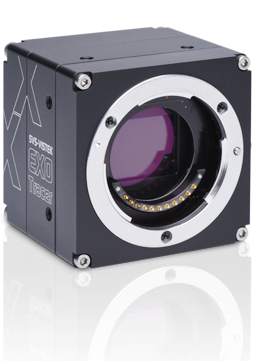Intelligent transportation systems (ITS) use cutting-edge communication networks to improve the safety of drivers and pedestrians, reduce traffic congestion, lower harmful greenhouse gases, and build the connected Smart Cities of tomorrow. The lifeblood of ITS are images from strategically mounted cameras used for everything from counting cars at stop lights to enforcing rules of the road.
 SVS-Vistek EXO Tracer Camera. Image Credit: SVS-Vistek
SVS-Vistek EXO Tracer Camera. Image Credit: SVS-Vistek
For decades, SVS-Vistek has been at the forefront of the ITS movement. The company helps communities solve the complex challenges facing modern transportation systems with its dynamic line of high-resolution industrial cameras. SVS-Vistek cameras are deployed worldwide to monitor traffic, enforce tollbooth collection, Automatic Plate Number Recognition (APNR), and red light systems, among other applications, where they contribute to the smarter and safer management of traffic flows.
The company's latest addition is the EXO Tracer Series of industrial cameras specially designed with fully functional lens control of focus, zoom and aperture via GenICam, along with high-speed USB3 and GigE interfaces to support the transmission of video. Twelve distinct camera models make up the EXO Tracer Series, giving integrators a choice of 12.3, 16.8, 19.6 or 20.2 megapixel color or mono Sony IMX CMOS sensors in speeds up to 22 frames-per-second (FPS). High resolutions, combined with fast FPS, make the cameras ideal for monitoring multiple traffic lanes with a single camera.
ITS cameras are often installed outdoors in environments that can pose serious challenges to their operation. EXO Tracer cameras are ruggedly engineered for extreme weather in temperatures from -10° to 65 °C (14° to 149°) thanks to advanced thermal management. The all-metal housing is IP40 protection rated yet is very compact to meet the minimal size requirements inside housings.
Another key to the EXO Tracer cameras' success is its Micro Four Thirds (MFT) lens mount compatible with MFT lenses including those from Panasonic. By avoiding internal mirrors, MFT allows a much thinner camera body. The MFT's beam geometry on the sensor side of the lens works in harmony with the high sensitive sensor, resulting in a nearly perfect flatfield image.